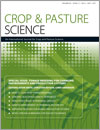Genomic selection is now being used at an accelerating pace in many plant species. This review first discusses the factors affecting the accuracy of genomic selection, and then interprets results of existing plant genomic selection studies in light of these factors. Differences between genomic breeding strategies for self-pollinated and open-pollinated species, and between-population level v. within-family design, are highlighted. As expected, more training individuals, higher trait heritability and higher marker density generally lead to better accuracy of genomic breeding values in both self-pollinated and open-pollinated plants. Most published studies to date have artificially limited effective population size by using designs of bi-parental or within-family structure to increase accuracies. The capacity of genomic selection to reduce generation intervals by accurately evaluating traits at an early age makes it an effective tool to deliver more genetic gain from plant breeding in many cases.
How to translate text using browser tools
22 May 2014
Genomic selection in crops, trees and forages: a review
Z. Lin,
B. J. Hayes,
H. D. Daetwyler
ACCESS THE FULL ARTICLE

Crop and Pasture Science
Vol. 65 • No. 11
Oct 2014
Vol. 65 • No. 11
Oct 2014
accuracy
genetic markers genomic selection
plants




